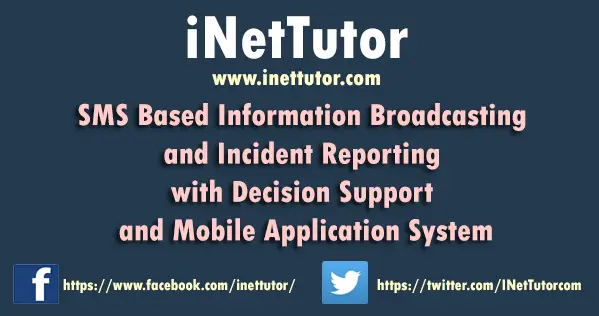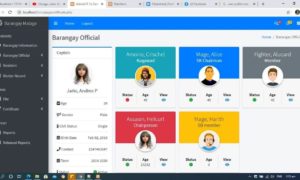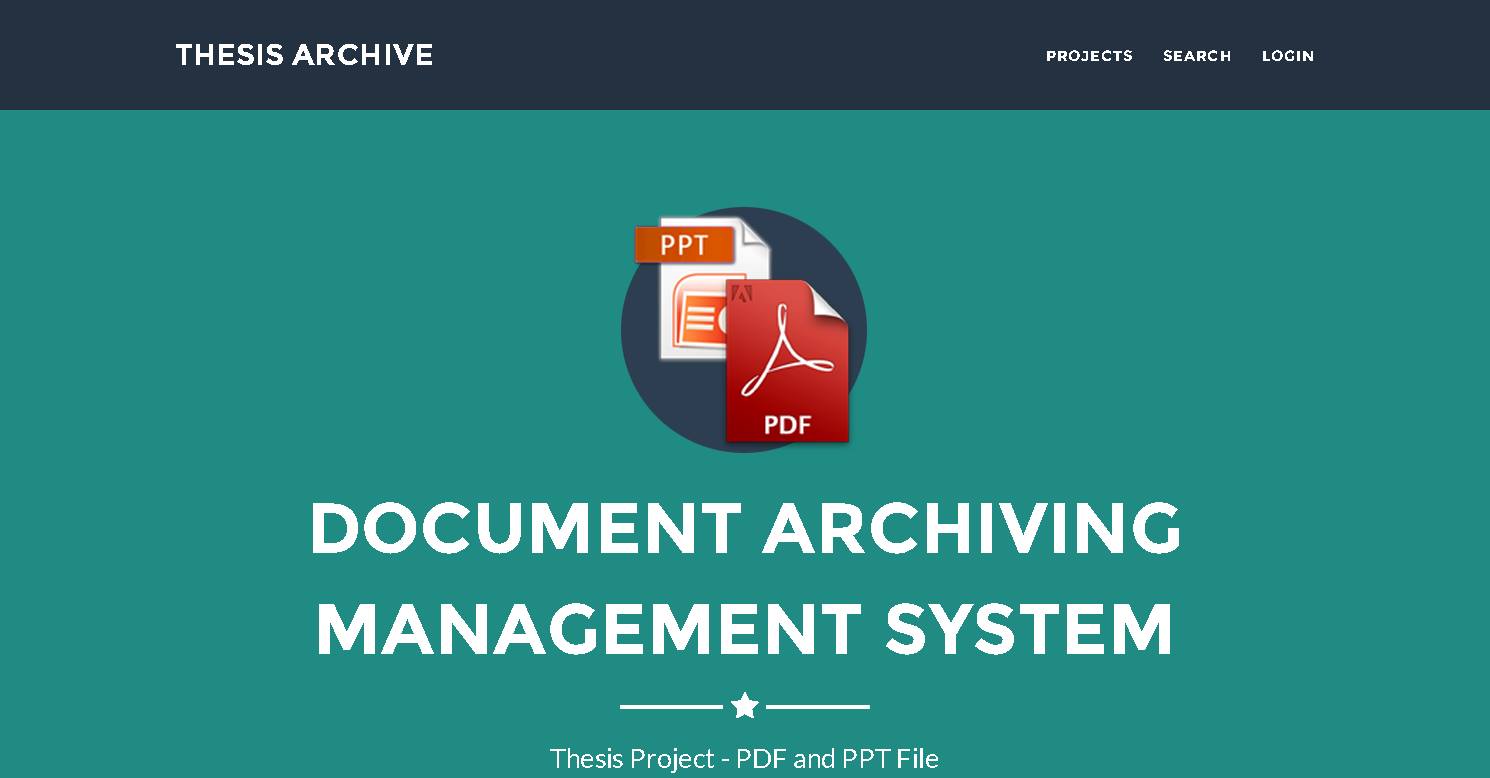Leave Application Management System Capstone Project
Introduction
Table of Contents
Background of the Study
Efficient leave management is a critical aspect of organizational operations, ensuring that employee absences are handled systematically without disrupting workflow. Traditional leave management methods, such as paper-based forms or spreadsheet tracking, are often time-consuming, prone to errors, and lack transparency. These manual processes can lead to delays in approvals, miscommunication, and difficulties in tracking leave balances. As organizations grow, the need for a streamlined, digital solution becomes increasingly evident. A digital leave management system can automate processes, reduce administrative burdens, and provide real-time access to leave-related data, ultimately enhancing productivity and employee satisfaction.
Statement of the Problem
Manual leave management systems present several challenges for both employees and HR personnel. Employees often face delays in submitting and tracking their leave requests, while HR departments struggle with processing large volumes of paperwork, maintaining accurate records, and ensuring compliance with organizational policies. Additionally, the lack of a centralized system can lead to inconsistencies and errors in leave data. A web-based leave application management system can address these issues by providing a centralized platform for submitting, approving, and tracking leave requests. This system would streamline the process, reduce errors, and improve communication between employees, managers, and HR personnel.
Objectives of the Study
The primary goal of this study is to design and implement a web-based Leave Application Management System that simplifies and automates the leave management process. The specific objectives include:
- Automating the Leave Request and Approval Process: Developing a system that allows employees to submit leave requests online and enables managers to approve or reject them efficiently.
- Implementing User Roles: Creating distinct roles for employees, managers, and HR personnel to ensure proper access control and workflow management.
- Generating Reports: Designing a feature to generate reports on leave trends, balances, and usage to aid decision-making and policy formulation.
Significance of the Study
This study is significant as it addresses the inefficiencies of traditional leave management methods and proposes a digital solution that benefits all stakeholders. For employees, the system provides a transparent and convenient way to manage leave requests. For HR personnel, it reduces administrative workload and improves accuracy in record-keeping. For management, it offers insights into leave patterns, enabling better workforce planning. By automating leave management, organizations can enhance operational efficiency, reduce errors, and foster a more productive work environment.
Scope and Limitations
The scope of this study focuses on developing a web-based Leave Application Management System with the following features: user registration, leave application submission, approval workflows, automated notifications, and report generation. However, the system is limited to handling predefined leave policies specific to the organization and may not account for highly complex or customizable leave rules. Additionally, the system is designed for web platforms and may not include mobile compatibility in its initial version. These limitations provide opportunities for future enhancements and scalability.
Review of Related Literature and Studies
Local and Foreign Studies
Several studies have explored the development and implementation of leave management systems, highlighting their importance in modern organizations. For instance, a study by Adewuyi et al. (2020) examined the challenges of manual leave management in Nigerian organizations and proposed a web-based system to automate the process. Their findings revealed that automation significantly reduced processing time and improved accuracy. Similarly, Smith and Johnson (2019) conducted a study in the United States, focusing on the integration of leave management systems with payroll software. Their research emphasized the importance of seamless data flow between systems to enhance efficiency. However, these studies often focused on specific organizational contexts, limiting the generalizability of their findings.
In the local context, Garcia et al. (2021) developed a mobile-based leave management system for Philippine universities. Their system allowed faculty members to submit leave requests and track their status in real-time. While the study demonstrated improved user satisfaction, it also identified challenges such as limited internet access and resistance to adopting new technologies. These studies collectively underscore the need for scalable, user-friendly, and context-specific leave management solutions.
Theoretical Framework
This study is grounded in Information Systems Theory, which emphasizes the role of technology in improving organizational processes. According to this theory, an effective information system should enhance data accuracy, streamline workflows, and support decision-making. Additionally, Workflow Automation Theory provides a framework for understanding how automating repetitive tasks can reduce human error, save time, and improve productivity. These theories guide the design and implementation of the proposed leave management system, ensuring it aligns with organizational goals and user needs.
Conceptual Framework
The study adopts the Input-Process-Output (IPO) Model to conceptualize the system.
- Input: Employee leave requests, manager approvals, and HR policies.
- Process: Automation of leave request submission, approval workflows, and data storage.
- Output: Approved/rejected leave requests, leave balance updates, and generated reports.
Alternatively, an Entity-Relationship Diagram (ERD) can be used to visualize the relationships between system entities, such as employees, managers, leave requests, and leave policies. This framework ensures a clear understanding of the system’s structure and functionality.
Related Systems
Several existing leave management systems have been developed, each with its strengths and weaknesses. For example:
- BambooHR: A popular HR software that includes leave management features. It offers user-friendly interfaces and integration with other HR tools but can be costly for small organizations.
- Zoho People: A cloud-based system that provides leave tracking and approval workflows. While it is affordable, its customization options are limited.
- Local University Systems: Many universities have developed in-house leave management systems tailored to their specific needs. These systems are cost-effective but often lack scalability and advanced features.
The proposed system aims to address the limitations of existing solutions by offering a cost-effective, scalable, and user-friendly platform tailored to the needs of small to medium-sized organizations.
Technology Stack
The development of the Leave Application Management System will utilize a combination of modern technologies to ensure scalability, performance, and user-friendliness. The technology stack is divided into four main components: Frontend, Backend, Database, and Hosting.
Frontend
The frontend is responsible for the user interface (UI) and user experience (UX). The following technologies will be used:
- HTML: For structuring the content of web pages.
- CSS: For styling and designing responsive layouts.
- JavaScript: For adding interactivity and dynamic behavior to the application.
- React.js: A popular JavaScript library for building reusable UI components and single-page applications (SPAs). React’s component-based architecture ensures modularity and ease of maintenance.
Backend
The backend handles the business logic, data processing, and server-side operations. The following technologies are considered:
- Node.js: A runtime environment that allows JavaScript to be used for server-side development. It is known for its high performance and scalability.
- Python (Django/Flask): Django is a high-level Python framework that promotes rapid development and clean design, while Flask is a lightweight framework suitable for smaller applications. Both are excellent for building robust backend systems.
- PHP: A widely-used server-side scripting language, particularly for web development. Frameworks like Laravel can be used for structured and secure backend development.
The choice of backend technology will depend on factors such as development speed, scalability requirements, and team expertise.
Database
The database is crucial for storing and managing data related to users, leave requests, and policies. The following options are considered:
- MySQL: A relational database management system (RDBMS) known for its reliability and ease of use. It is suitable for structured data and complex queries.
- PostgreSQL: An advanced open-source RDBMS that supports complex data types and scalability. It is ideal for applications requiring robust data integrity.
- MongoDB: A NoSQL database that stores data in JSON-like documents. It is highly scalable and suitable for applications with unstructured or semi-structured data.
The choice of database will depend on the nature of the data and the system’s requirements for scalability and flexibility.
Hosting
The application will be deployed on a cloud platform to ensure high availability, scalability, and security. The following platforms are considered:
- Amazon Web Services (AWS): Offers a wide range of cloud services, including EC2 for hosting, RDS for database management, and S3 for storage.
- Microsoft Azure: Provides similar services to AWS, with strong integration capabilities for Microsoft products.
- Google Cloud Platform (GCP): Known for its data analytics and machine learning capabilities, GCP is a strong contender for scalable hosting.
Cloud hosting ensures that the system can handle varying workloads and provides features like automatic backups, load balancing, and security monitoring.
System Design and Implementation
Explanation of Components
- Frontend:
- Built using React.js, the frontend is responsible for the user interface and user experience.
- It communicates with the backend via RESTful APIs or GraphQL to fetch and submit data.
- Ensures a responsive and interactive design for seamless user interaction.
- Backend:
- Developed using Node.js or Python (Django/Flask), the backend handles business logic, authentication, and data processing.
- It receives requests from the frontend, processes them, and interacts with the database to retrieve or store data.
- Implements API endpoints for leave requests, approvals, and reporting.
- Database:
- Stores all system data, including user information, leave requests, policies, and reports.
- Uses MySQL or PostgreSQL for structured data or MongoDB for flexibility with unstructured data.
- Ensures data integrity, security, and efficient querying.
Features and Functionalities
The system is designed to cater to three primary user roles: Employees, Managers, and Administrators. Each role has specific features and functionalities tailored to their needs.
Employee Features
- Leave Request Submission:
- Employees can submit leave requests by filling out a form with details such as leave type, start date, end date, and reason.
- The system validates the request against available leave balances and organizational policies.
- Leave Balance Tracking:
- Employees can view their remaining leave balances for different types of leave (e.g., sick leave, vacation leave).
- The system updates balances automatically after each approved leave request.
- Request Status Tracking:
- Employees can track the status of their leave requests (e.g., pending, approved, rejected).
- Notifications are sent to employees when their request status changes.
Manager Features
- Leave Approval/Rejection:
- Managers receive notifications for pending leave requests from their team members.
- They can approve or reject requests based on team workload and organizational policies.
- Reporting:
- Managers can generate reports on team leave trends, such as leave usage patterns and balances.
- Reports can be exported in formats like PDF or Excel for further analysis.
- Team Leave Overview:
- Managers can view a dashboard summarizing their team’s leave status, including upcoming leaves and pending requests.
Admin Features
- User Management:
- Admins can add, update, or deactivate user accounts (employees, managers, and other admins).
- They can assign roles and permissions to users.
- Leave Policy Configuration:
- Admins can define and update leave policies, such as maximum leave days, carryover rules, and blackout periods.
- Policies are automatically enforced by the system during leave request submissions.
- System Monitoring:
- Admins can monitor system usage, track active users, and generate logs for auditing purposes.
- They can also resolve technical issues and manage system updates.
Discussion and Recommendations
The Leave Application Management System successfully addresses the inefficiencies and challenges associated with traditional, manual leave management processes. By automating leave request submission, approval workflows, and reporting, the system significantly reduces administrative workload, minimizes errors, and improves transparency. Employees benefit from a user-friendly interface for submitting and tracking leave requests, while managers and HR personnel gain access to real-time data and analytics for better decision-making.
When compared to existing systems, the proposed solution stands out for its customizability and scalability. Unlike off-the-shelf software, this system can be tailored to meet the specific leave policies and workflows of an organization. Additionally, its use of modern technologies ensures high performance and ease of maintenance. While commercial systems like BambooHR and Zoho People offer robust features, they often come with high costs and limited flexibility, making them less accessible for small to medium-sized organizations. The proposed system bridges this gap by providing a cost-effective, adaptable solution.
Recommendations
For Organizations Adopting the System:
- Training and Onboarding: Provide comprehensive training sessions for employees, managers, and HR personnel to ensure smooth adoption of the system.
- Customization: Work closely with developers to customize the system according to the organization’s specific leave policies and workflows.
- Feedback Mechanism: Establish a feedback loop to gather user input and continuously improve the system.
- Data Security: Implement additional security measures, such as two-factor authentication (2FA) and regular security audits, to protect sensitive data.
For Future Researchers:
- Mobile Application: Develop a mobile version of the system to enhance accessibility and convenience for users.
- AI Integration: Explore the integration of artificial intelligence (AI) for predictive analytics, such as forecasting leave trends or identifying potential staffing gaps.
- Cross-Platform Compatibility: Investigate the feasibility of making the system compatible with multiple platforms, including desktop, mobile, and tablet devices.
- Scalability Testing: Conduct further research on optimizing the system for large-scale organizations with thousands of employees.
- Comparative Studies: Perform comparative studies of different leave management systems to identify best practices and areas for improvement.
Conclusion
The Leave Application Management System represents a significant step forward in streamlining leave management processes for organizations. By addressing the limitations of traditional methods and offering a scalable, user-friendly solution, the system has the potential to enhance productivity, reduce administrative burdens, and improve employee satisfaction. While challenges were encountered during development, they were successfully overcome through careful planning and iterative improvements. The recommendations provided aim to guide organizations in adopting the system and inspire future researchers to build upon this work.
You may visit our Facebook page for more information, inquiries, and comments. Please subscribe also to our YouTube Channel to receive free capstone projects resources and computer programming tutorials.
Hire our team to do the project.


